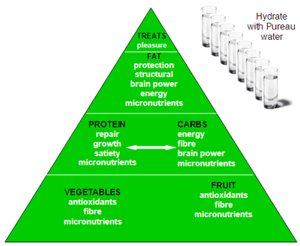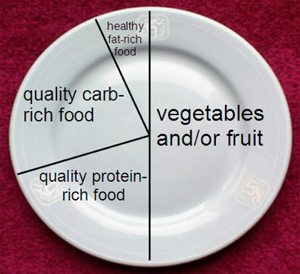One of the 5 keys to healthy living is eating well. Not only do we get our energy from the foods we eat, but when our cells, tissues and organs repair themselves, they derive the building blocks of repair from those same foods. We are what we eat, is very true, because our body repairs and heals itself from those foods.
85% of the illnesses we suffer from are due to lifestyle… meaning we cause them….. The biggest lifestyle factor is what we put in our mouth.
Most of the modern day foods we eat (meaning anything that comes pre-packaged) has been altered in some way has less nutritional benefit and contains preservatives and chemicals that cause inflammation and disease in our bodies.
Here is a list of food additives that have to be avoided:
Colours:
102, 104, 107, 110, 120, 122-129, 132, 142, 150, 151 155, 160B (annotto)
Preservatives:
Sorbates 200-203, Bensoates 210-213,Suplhites 220-228,Nitrates, nitrites 249-252,Propronates 280-283.
Antioxidants:
Gallates 310-312
TBHQ, BHA, HBT 319-321
Flavour Enhancers:
620-625, 627, 631
Hydrolysed Vegetable Protein (HVP)
Hydrolysed soy Protein (HSP)
Soy Protein Isolate (SPI)
Textured Vegetable Protein (TVP)
Hydrogenated Vegetable Oil
Vegetable Oil
A New Food Pyramid
(by Dr Joanna McMillan Price)
The traditional healthy eating pyramid puts carbohydrate-rich grain foods, such as bread, rice and pasta, along with vegetables and fruit, at the base to encourage us towards a low-fat, high carbohydrate diet. Many nutrition experts including myself now question this approach, as clearly it is not working in curbing overweight and obesity rates. There is a strong argument that humankind was never designed to eat such a high carbohydrate diet, but making it worse is our tendency to eat all the wrong carbs. Such a typical modern diet tends to be energy-dense and nutrient poor, leading to weight gain and ill health.
This revamped food pyramid is designed to reverse this. It will guide you towards a diet that gives you more bang for your bite, a diet that is nutrient-dense but energy saving. It is a back to nature approach reflecting the way we were designed to eat, and factors in the latest nutrition research.
Vegetables and fruit form the base. For very few kilojoules they provide an incredible wealth of essential nutrients. In essence this means you can afford to eat a lot more of these foods than any other.
On the second level you’ll find a flexible line between the more energy dense protein-rich and carb-rich foods. So long as you eat the minimum from each group, you can have more protein and less carbohydrate, or vice versa. How much of each you choose to eat will depend largely on factors such as your food preferences, exercise levels and body type.
Near the top of the pyramid lie the fat-rich foods. Being energy dense the volume we eat needs to be less, but because they contain many essential nutrients not found in other foods they must be included in the daily diet. The days of buying everything ‘low fat’ and ‘fat free’ are thankfully gone! It’s all about quality.
And finally at the tip of the pyramid are the treats. What constitutes as treats are the foods and drink that really give you pleasure but you feel you shouldn’t have. Chocolate, lollies, a burger, G and T, or whatever else you feel you couldn’t live without. And neither should you have to. As long as you remember the positioning of treats in the food pyramid and eat them in that proportion so that the bulk of your diet is packed full of more nutritious foods, it really doesn’t matter much what makes up this small space.
Why do we need to eat from each of these food groups? Well it’s quite simply this—each food group provides a different set of nutrients and has a special purpose. Without your share of each, your body cannot perform at its best and sooner or later you’ll feel the effect. Perhaps you don’t eat enough vegetables and fruit, and suffer from more colds and flu than you need to, or you’ve cut out carbs to try and lose weight – and find yourself constipated and unable to concentrate. You may have chosen to cut out meat, can’t cook fish and don’t understand tofu – but you always feel tired, your spirits are low and you never feel fully sated after meals. Or you may be battling with your weight on a low fat diet and have dry skin, a foul temper and an unbearable craving for a family block of chocolate.
The solution is to eat more different foods, not less. Broaden your palate to include foods from each of food groups, in the proportions illustrated in the pyramid.
Creating Healthy Meals
(by Dr Joanna McMillan Price)
Following an expert designed meal plan is all well and good for a week or two, but long lasting results require permanent change to your eating habits and that means knowing how to do it for yourself. To help you achieve this, here is my suggested template for how to create your meals.
This model allows you to translate the New Food Pyramid into a plate model for each meal. It is not meant to be set in stone, rather serve as a guide. So don’t stress if at breakfast you have a bit too many carbs and not enough fruit or veg, but then at dinner have steak and salad and not so many carbs. The point is to allow these things to balance out and overall to meet this pattern.
Try to fill half your plate with veggies and/or fruit. This is easiest to do at dinner, but work on the other meals. These foods best meet our requirement for low energy but high nutrient density. They pack loads of nutrition into only a few kilojoules.
Then add a moderate serve of both a high protein and a high carb meal, choosing quality over quantity. For the carbs that means a low GI, nutrient-rich food, and for protein one that is low in saturated fats, perhaps a source of omega-3 essential fats and certainly rich in other nutrients such as iron and zinc. Finally add some healthy fat for both taste and nutrition. This might be in the form of a healthy oil to cook, in a sauce or dressing or from a food such as avocado, nuts and seeds, or hummus. Cheese can also count here – although it’s high in saturated fat it is high in other nutrients, especially minerals such as calcium and zinc. Just be sensible about the frequency and portion size you eat.
The 4 Phase Fat Elimination and The Hunter Gatherer Diets
For those needing an extra boost at loosing those extra kilos or they are needing a good system cleanse out and hormone balance the 4 Phase Fat Elimination Diet (HGC diet) is a great tool for doing so. HCG stands for Human Chorionic Gonadotropin, a hormone naturally produced by the placenta in pregnant women and almost completely controls the metabolic function through the hypothalamus throughout the pregnancy. HCG weight loss studies have shown that weight lost following the Simeons protocol comes directly from adipose fat tissue rather than lean muscle. In doing so, the weight lost comes directly from unhealthy fat and does not strip the body of much needed muscle, vitamins or minerals essential to maintain good health, while at the same time, releasing excessive amounts of fat-stored nutrients into the blood stream to be absorbed by the body. For this reason, HCG dieters report a feeling and appearance of great health and marvel at the loss of negative health risks they had as an overweight individual. Dieters take a natural homeopathic drop that stimulates HCG production and a strict dietary intake. Most people loose 3-4 kilos per week.
The Hunter Gatherer Diet, also known as paleolithic diet or caveman diet (Paleo diet) , is all about natural foods to help achieve greater health and a leaner physique. The human body evolved for more than 2 million years with the food found in nature: game meat, fish, vegetables, wild fruits, eggs and nuts. The human race was thriving on this diet high in animal fat and proteins and low in carbohydrates, but things changed when we introduced unnatural foods to our bodies. 10,000 years ago, we started eating more agricultural foods completely alien to our genes and metabolisms and wreaked havoc in our body, often causing what we call the metabolic syndrome or diseases of civilization. That includes obesity, type 2 diabetes, hypertension, heart disease, auto-immune diseases, osteoporosis, Alzheimer’s and a host of other conditions that were unknown to our ancestors while plaguing us today.














No Comments